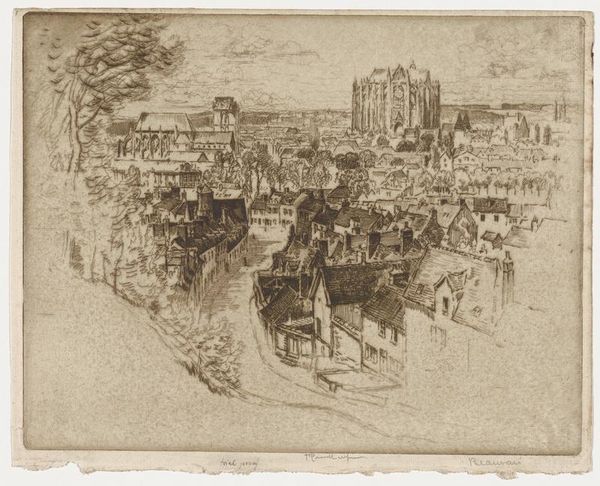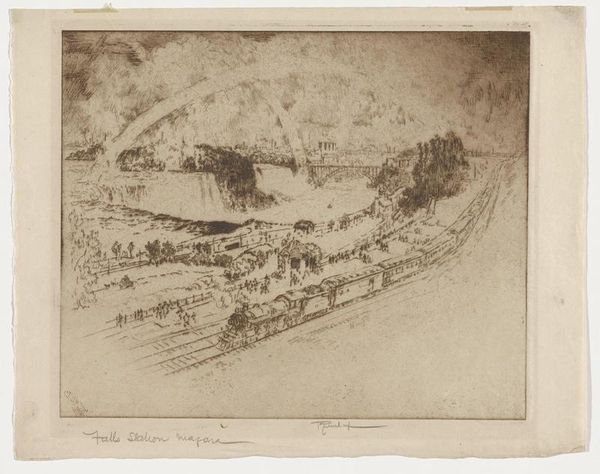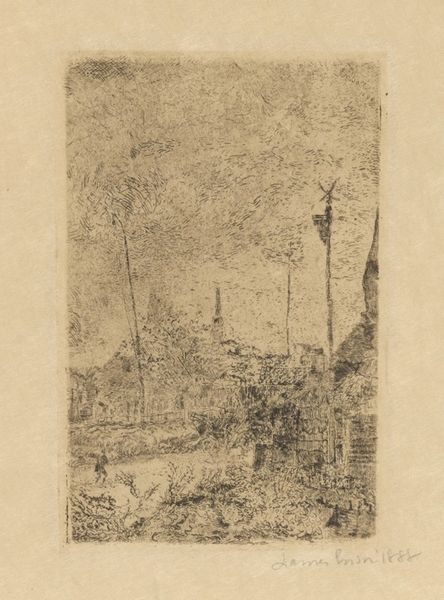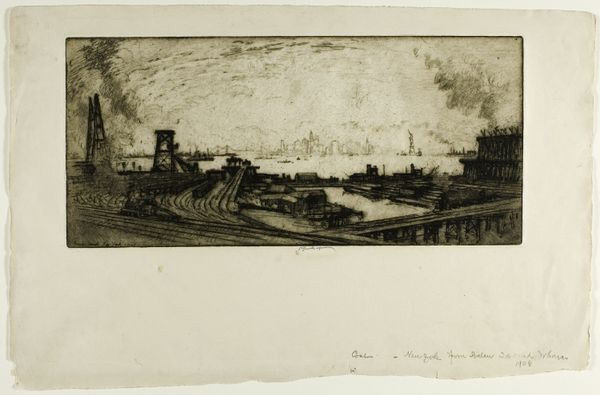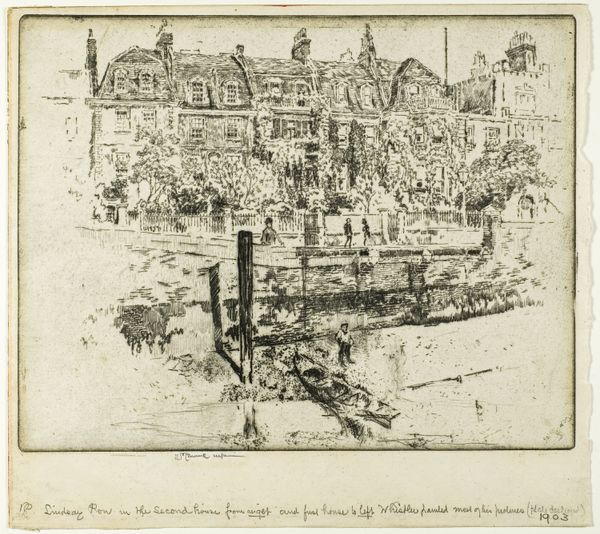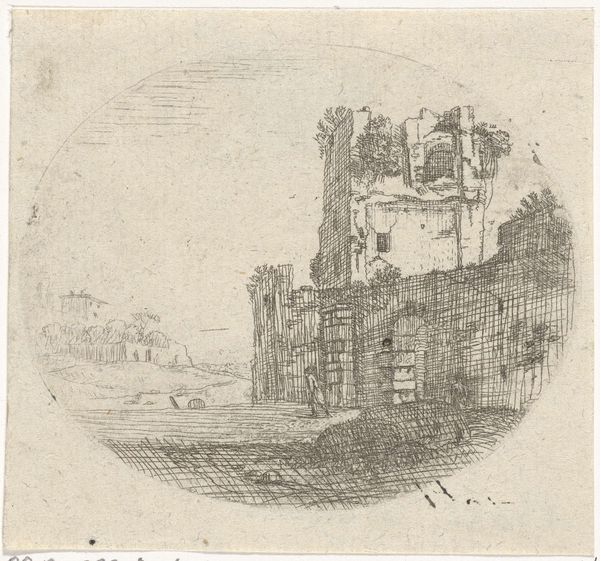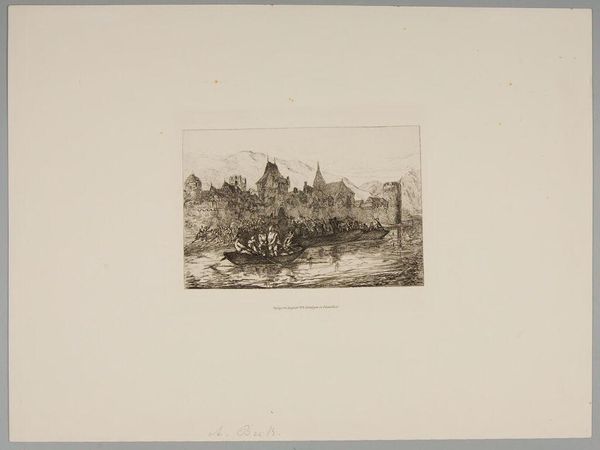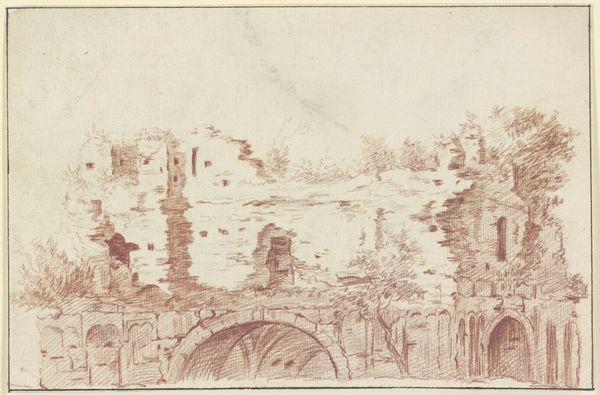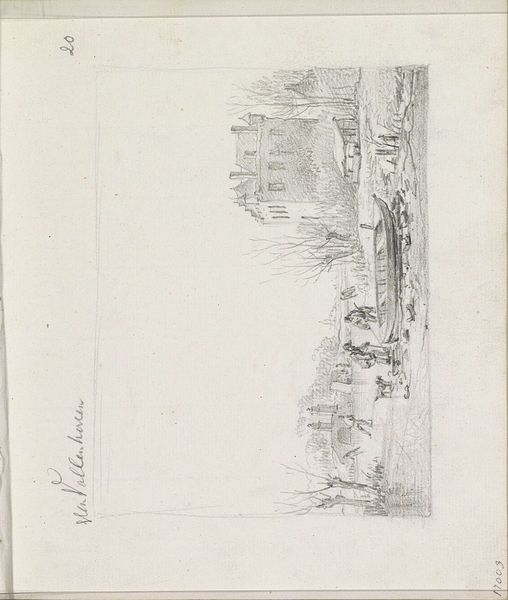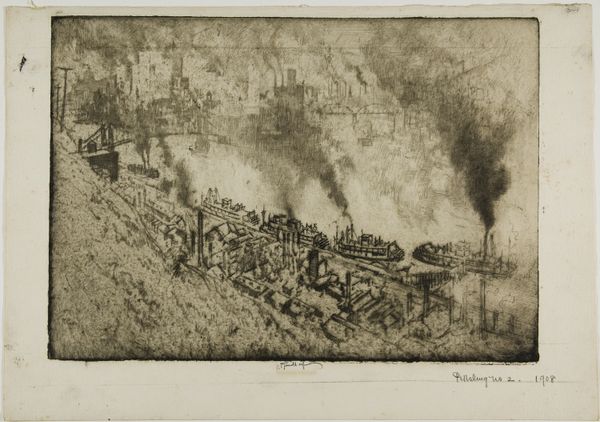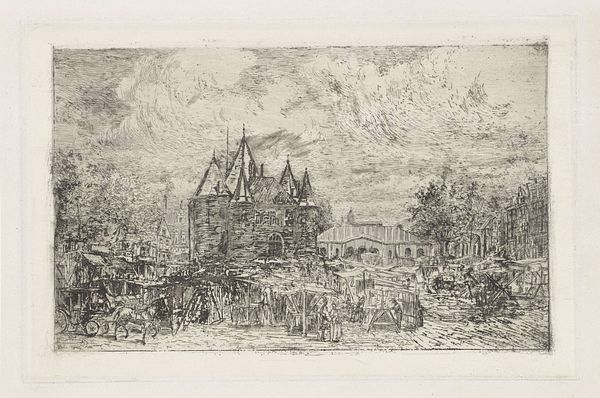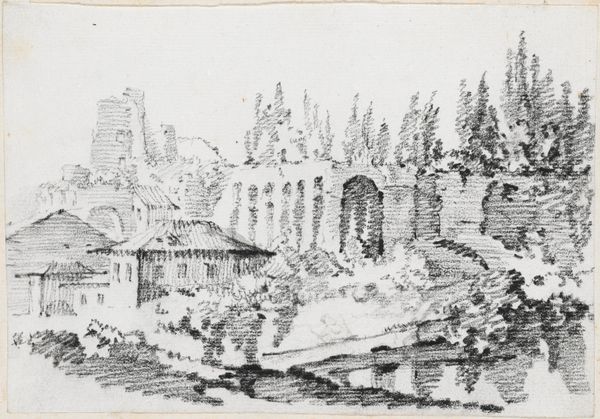
print, etching
# print
#
etching
#
landscape
#
realism
Copyright: National Gallery of Art: CC0 1.0
Curator: Here we have James McBey's "Edinburgh Castle," an etching from 1905. What's your immediate impression? Editor: I find it a bit brooding. The darkness of the etching almost obscures the architecture; it's more about the atmosphere than a literal depiction. It seems as though the city is breathing into life out of an inky night. Curator: Yes, there's definitely a sense of historical weight and somber beauty. The castle has so many symbolic associations. As a defensive structure it represents strength, but its role in Scottish history is a complex, at times tragic, one. McBey has chosen to emphasize that depth. Editor: And the process itself, etching, contributes. Think of the labor, the precise control required to suggest such detail and tone. There's an inherent relationship between the materials and the way we experience the final product, which emphasizes a tactile quality, inviting the audience into not only the artist's point of view, but the perspective of those who built this monolithic form. Curator: Absolutely. It is interesting how the artist is evoking the historical role of this Castle as a key visual and social reference point, creating almost a myth of origin. Editor: Which in turn transforms this historical setting into more than an antiquated landmark; he has re-processed an old icon into a site that allows contemporary observers to reassess historical weight through present perspectives. Curator: It's remarkable how McBey, working with etching in the early 20th century, captures both the monumentality of the castle and that complex cultural memory. Editor: Indeed. A testament to the power of material and technique to transform a symbol into a potent experience.
Comments
No comments
Be the first to comment and join the conversation on the ultimate creative platform.
